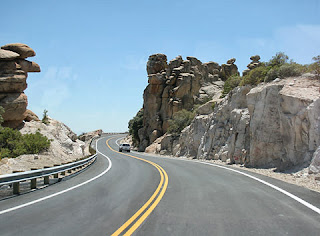 Designing exhibits for outdoors presents a whole new set of challenges. Things like rain, snow, insects, and UV exposure need to be carefully considered when sourcing appropriate materials for an outdoor environment.
Designing exhibits for outdoors presents a whole new set of challenges. Things like rain, snow, insects, and UV exposure need to be carefully considered when sourcing appropriate materials for an outdoor environment.
Many museums use floor graphics to help their visitors navigate throughout their spaces. Arrows, footprints, and lines can be used to clearly mark the right path, making it easier for the visitor to find their way around a large museum. Floor graphics are a great use of space but what if your exhibit is outside? Painting is an option but between weather conditions and heavy foot traffic, you'll find yourself repainting every few months.
This was a problem I was faced with at the Bronx Zoo Tiger Mountain exhibit. Visitors could come to watch the tigers being fed at scheduled times throughout the day. Tiger paw prints were stenciled on the ground with paint indicating the point which visitors were not allowed to cross once the feeding began. After a few months, the paw prints would start to wear away. Not only did this not look nice, but it was ineffective as a safety barrier.
Presented with this challenge, I was determined to find a solution that would literally "stick."
I made a call to 3M and was told that regular Scotchprint floor graphics would not work for outside but they did recommend using their 3M Stamark highway marking tape. I figured if this tape was designed to withstand a snowplow then it should (hopefully) be able to hold up against Bronx Zoo visitors. All I needed to do was send a CAD file to them of the paw print and they were able to cut them to shape. Of course, you can get the standard pre-cut arrows and lines as well. The ground surface needs to be above 40 degrees to apply the tape and I would also recommend power washing first. The colors are limited to white and yellow but my hope is that 3M will broaden their color palette and not limit the use of this material to just highways. This can be a great wayfinding tool for large outdoor venues like zoos, aquariums, and amusement parks.
Click this link for more info on 3M Stamark products: http://www.3M.com


